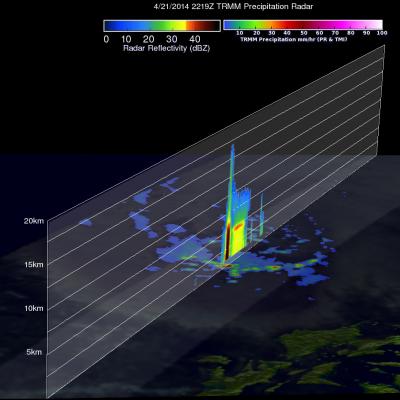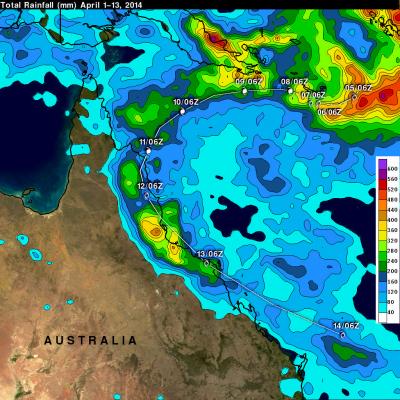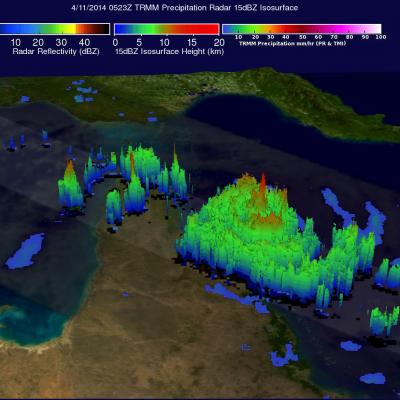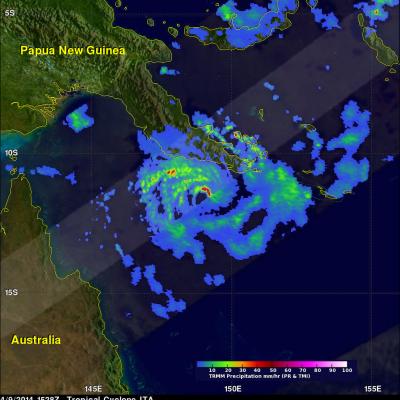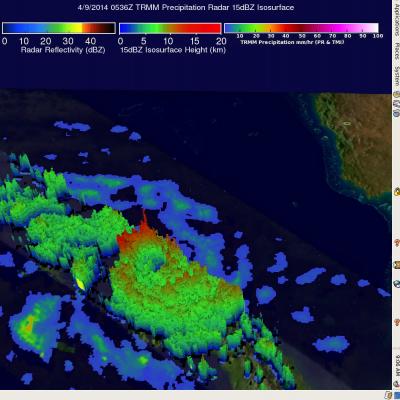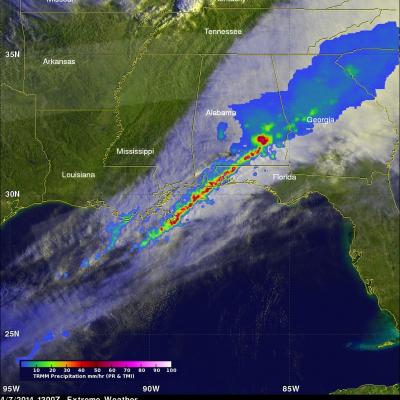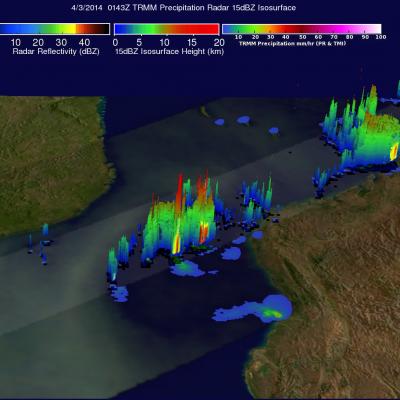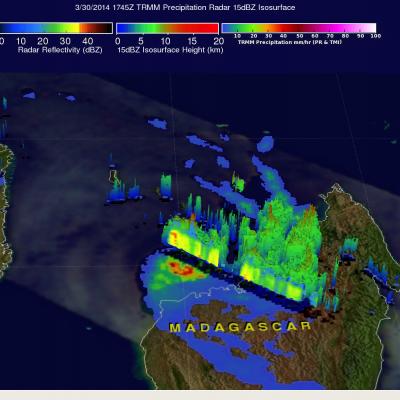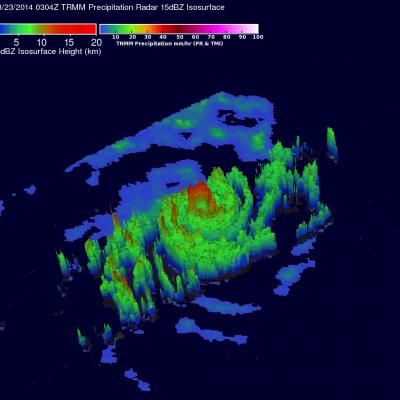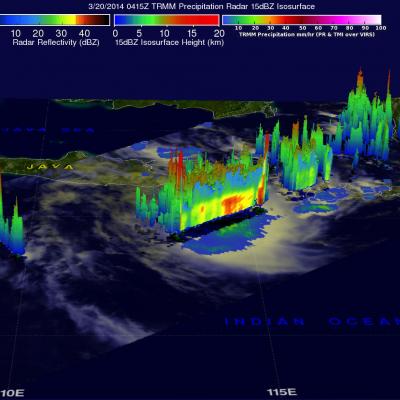Tropical Disturbance Adds Rain To Philippines
On April 21, 2014 at 2219 UTC the TRMM flew over stormy weather within a tropical disturbance near the Philippines. Precipitation from this tropical low adds to above normal rainfall for the Philippines during the past 30 days. Heavy rainfall with the slow moving remnants of tropical depression Peipah caused flooding in the Philippines earlier this month. TRMM's Precipitation Radar data were used to make a 3-D vertical slice through the tallest thunderstorm towers in this area of stormy weather. This slice shows that some storms were returning radar reflectivity values of greater than 52dBZ


